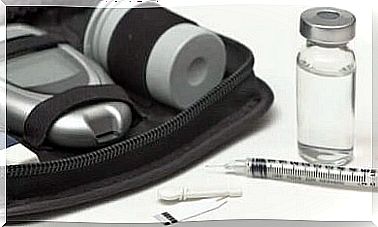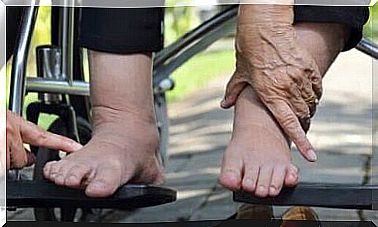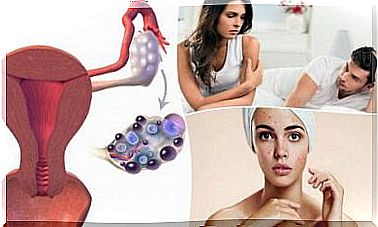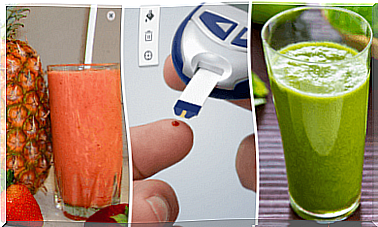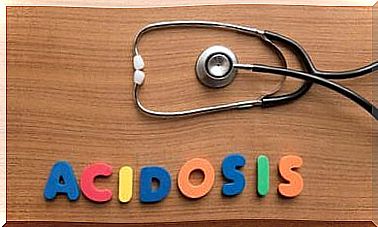Heat Rash In Babies: Should We Be Concerned?
Sudamina or heat rash is a skin disorder that develops when sweat is retained by an obstruction in the sweat glands. It is important to avoid environments that are too hot and humid so that they do not cause discomfort to the baby.

The appearance of heat rash in babies, or sudamina , can worry moms. However, it is a mild, transient skin disorder of no major significance. They are also known as crystalline miliaria and are very common in countries with hot and humid climates.
It often affects newborns, but can occur in the months after birth, especially before the first year. The problem is caused by an obstruction of the sweat glands, which prevents the elimination of sweat.
The result is a rash with small blisters that are often mistaken for other disorders. Should we be worried about the sudamina? While it is good to take precautions to keep your child comfortable, this is not a serious condition and does not involve other risks.
Why do heat rash occur in babies?
Sudamina is a reaction of the skin when there is a malfunction in the baby’s sweat system. This situation results in an inability to eliminate sweat through the skin. This results in the formation of small red or white pimples.
These pimples usually form in areas where sweat is usually profuse: the neck, chest, back, etc. However, their location can be variable, as can their extent throughout the body. Due to the appearance they cause to the skin, one might think that it may be a more serious problem.
But unlike other rashes, heat rashes don’t come with a fever and usually go away on their own without treatment. Plus, they’re not contagious and usually don’t leave any marks or scars on the skin.
Risk factors
Babies as young as a few weeks old are more susceptible to suffering from sudamina, especially if they live in hot, humid climates. The risk increases in children with atopic or dry skin. In general, several risk factors are involved in its occurrence. Let’s see some of them:
- Moderate or high fever
- Excessive heat
- Growth of bacteria (staphylococci) on the surface of the skin
- Using powders and creams that clog skin pores
Symptoms of sudamina in infants
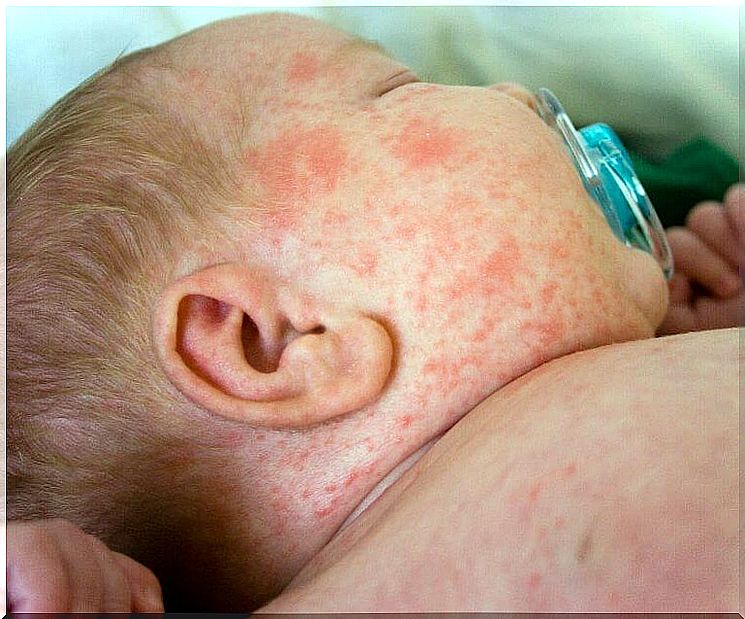
The main symptom of sudamina in infants is a rash similar to hives. These are small blisters that usually get rough or crusty when they burst. In most cases, they form in areas where there are more sweat glands:
- Skin folds
- Forehead, eyelids and cheeks
- Thorax
- Back
- Groin and thighs
- Armpits and arms
Since sudamina is not an infection, it is not accompanied by fever. However, due to the itching, the baby may be restless or nervous. To dispel any doubt about other possible conditions, consult your pediatrician. This professional can confirm the diagnosis easily through a physical examination.
Tips for the prevention and treatment of sudamina in babies
The best way to avoid heat rash in babies is to avoid excessive sweating. The downside is that the high summer temperatures can make things difficult. This is why it is important to know how to take care of your child to try to keep him fresh. Apply the following tips:
- Check her diaper frequently and change it as soon as it gets wet so it doesn’t build up heat and humidity.
- Cool your baby in a lukewarm water bath, but avoid using soaps or gels which can irritate the skin.
- When drying, avoid rubbing too much with the towel so as not to aggravate the irritation.
- Dress it up with lightweight, breathable cotton fabrics.
- Try to maintain a cool atmosphere throughout the house.
- Avoid sun exposure and take preventative measures when you need to go outside.
- Touch their body several times a day to check if they are hot or sweating.
- Prepare water compresses with sodium bicarbonate and apply them to the affected areas using a soft cloth or gauze.
- Avoid dressing her too warmly, especially in good weather.

How to treat sudamina in babies?
Once the baby’s heat rash is present, it is normal to seek treatment to reduce it. In many cases, the pediatrician advises that recovery should be allowed to occur on its own with basic care. Because they disappear on their own in 2 or 3 days.
If the pimples are very bothersome for the baby or come back often, the professional may suggest using a cortisone cream. Other alternatives include bathing with chamomile infusions or applying aloe vera.
To conclude …
Sudamina is a benign condition that is safe for the baby. But because the symptoms can be bothersome, it’s good to know how to deal with them and what products can be helpful in relieving their itchiness.
